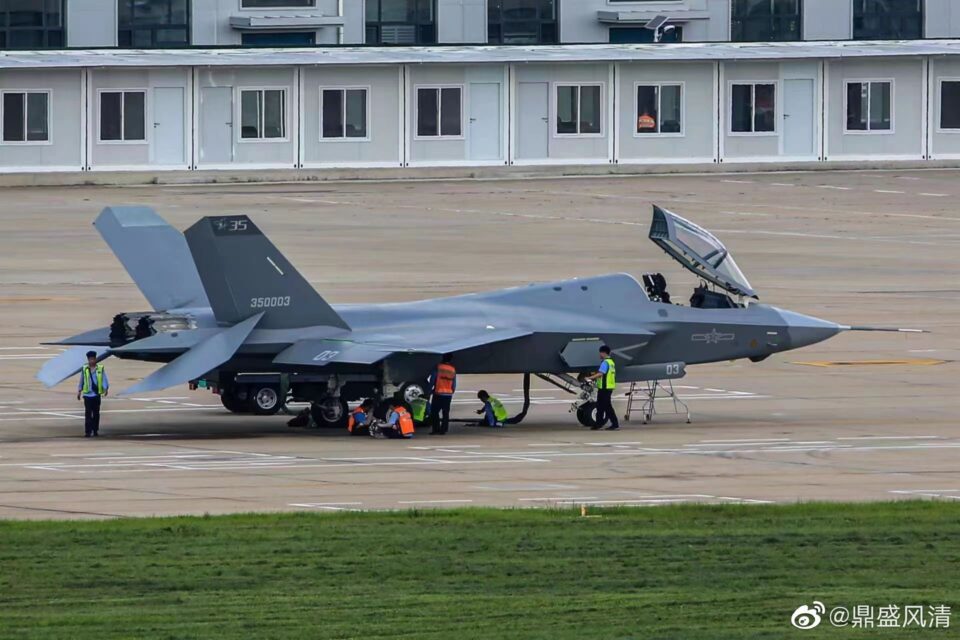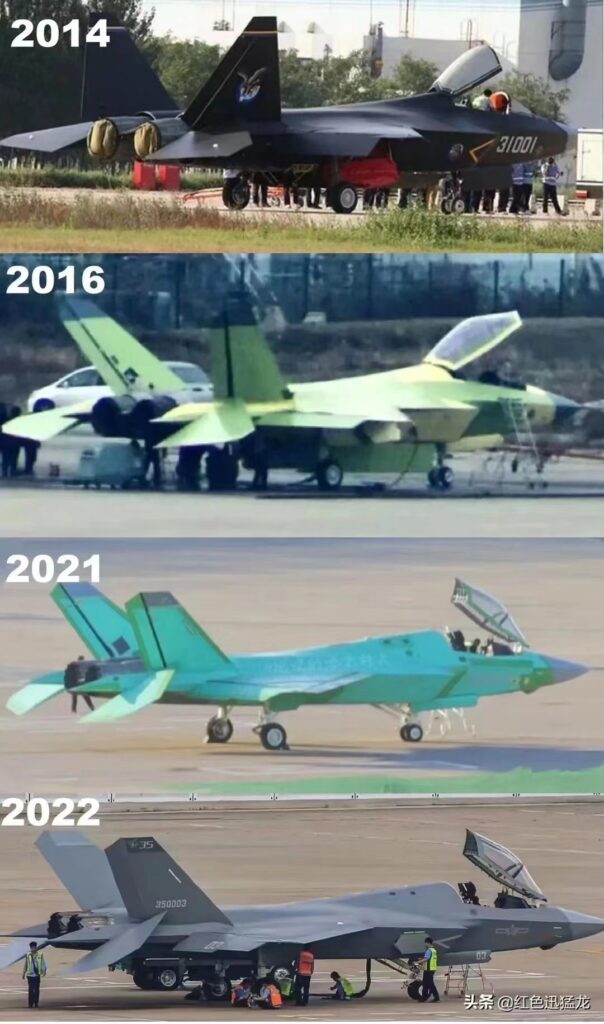Aviation
China displays the most recent J-35 stealth fighter with a new jet engine. WS-21
For the first time, a high-resolution image of a Chinese Shenyag J 35 surfaced, as evidence of China’s competitive edge over western aircraft in the production of commercial and military aircraft.

For the first time, a high-resolution image of a Chinese Shenyag J 35 surfaced, as evidence of China’s competitive edge over western aircraft in the production of commercial and military aircraft.
China may enter a new aircraft in the Fifth Generation Fighter race. The US has created two fighter jets, the F22 and F35, while on the other side, Russia has built one fifth-generation fighter jet, the Sukhoi Su-57, and will soon begin production on a second Su 75 that will be used for combat. A fifth-generation Checkmate prototype that will also be unveiled soon. Even Turkey is developing its own fifth-generation fighter aircraft, the TAI TF-X. India is also working on creating its own fifth-generation fighter plane, the AMCA.
The project was previously referred to as J 31 and later changed to J 35 in 2019. The project was initiated in 2011, and lately, after extensive development, the first pictures of the completed J-35 aircraft were released.
Shenyang Aircraft Corporation created the mid-sized twinjet J-35, a prototype fighter jet of the fifth generation (SAC). Even though sources have hinted that China is preparing a sophisticated plane before, this is the first time such clear images of the jet have appeared online. The prototype, also referred to as the FC-31, is a direct rival to Lockheed Martin’s F-35 II Lighting, which is recognised as the best fighter jet in the world and comes in three variants: A, B, and C based on operational capabilities. It resembles the naval version of the Chinese Shenyang J-35.
The J-35 appears to be a navy variant fighter jet; it has the serial number 35003 on its side and is painted in a grey tactical paint job with a muted national emblem. Other marks, like as those on the canopy and engines, are also apparent in the pictures.
We can now see the integral bulkhead at the back of the F-35-like front-opening, internally bent canopy. The rear canopy arrangement of the A and C models of Lockheed Martin’s F-35 Joint Strike Fighter is largely comparable to this.
China might want to sell the planes overseas as an option for nations unable to purchase the F-35
The improved FC-31 naval variant, known as the J-35 by observers, flew for the first time on October 29, 2021. It will be operated using an electromagnetic Aircraft Launch System from the upcoming Type 003 aircraft carrier.
J-35 number 350003 … a few details! pic.twitter.com/Yp3JqIWvu4
— @Rupprecht_A (@RupprechtDeino) July 22, 2022
The principal armaments of the J-31 are the PL-10 short-range missile and PL-12 medium-range air-to-air missile, and it is capable of carrying 8,000 kg (18,000 lb) of payload, with 6,000 kg (13,000 lb) carried on six external hardpoints and four munitions weighing 2,000 kg (4,400 lb) each inside. It is also possible to mount 4 PL-21 missiles within the J-31’s internal weapons compartment. It can lift a maximum of 25,000 kg (55,000 lb) and has a fighting radius of 648 nmi (746 mi; 1,200 km).
Its power system consists of two WS-13 afterburning turbofans with a combined thrust of 87.2 kN (19,600 lbf) and two WS-19 afterburning turbofans with a combined thrust of 110 kN (24,000 lbf) apiece.
The FC-31, a naval derivative, is expected to launch from and land on Type 004, China’s fourth scheduled aircraft carrier. China is testing the J-10D, an upgraded version of the J-10 that was developed in conjunction with the Pakistan Air Force, in addition to the FC-31.

Aviation
Boeing, Antonov to Collaborate on Defense Projects

– MOU represents Boeing’s commitment to work with Ukrainian industry
– Includes exploring opportunities for collaborating on in-country support of Unmanned Aerial Systems
A Memorandum of Understanding was signed today by Boeing and Antonov Company to investigate potential collaboration on defense-related projects.
“We’re happy to keep collaborating with the Antonov Company to help Ukraine’s economic development and expansion,” stated Ted Colbert, CEO and president of Boeing Defence, Space, & Security.
Airbus and the Antonov An-225: The Best Partnership:Click here
“This agreement demonstrates our ongoing efforts to find more opportunities to work with Ukrainian industry, which was underscored by our signing of the Ukrainian Defence Industry Compact earlier this year.”
The areas of potential collaboration identified in the agreement consist of training, logistical support and overhaul services for tactical Unmanned Aerial Systems utilized by the Ukrainian Armed Forces, which includes the ScanEagle. In addition, the companies will also explore opportunities for Antonov to provide engineering support to Boeing.
The six largest cargo aircraft ever built in the aviation industry:Click here
“A strong, innovative, and efficient defense industry is key to sustainable economic development and national security, and we are extremely excited to collaborate with Boeing,” said Ievhen Gavrylov, CEO of Antonov Company.
This agreement brings a whole new level of opportunity to implement the latest and most effective solutions – in addition to the possibility of future projects with Boeing in the aerospace and defense industry.”
-

 Travel1 week ago
Travel1 week agoAir India to Expand US Operations with Three New Routes After a Decade
-

 Travel2 weeks ago
Travel2 weeks agoWhy We Should Avoid These Stamps in a Passport
-

 Airlines1 month ago
Airlines1 month agoInvestigations Reveal Fake Chinese Titanium in Boeing and Airbus Jets
-

 Tech4 weeks ago
Tech4 weeks agoChina’s CATL Plans 1,800-Mile Electric Plane Launch by 2027
-

 Airport3 days ago
Airport3 days agoTop 10 Largest Airports in the World by Size
-

 Aerospace4 weeks ago
Aerospace4 weeks agoChina’s Fighter Jets Turn Wings into Autonomous Drones
-

 Airlines4 days ago
Airlines4 days agoAir India Rolls Out A350s for Delhi-New York JFK and Newark Routes
-

 Defence3 weeks ago
Defence3 weeks agoBoeing Enhances Chinook with New Engines and Block II Upgrades at $96 Million








